Source:https://www.techsmith.com/blog/make-youtube-video/
How to Make a YouTube Video (Beginner’s Guide)
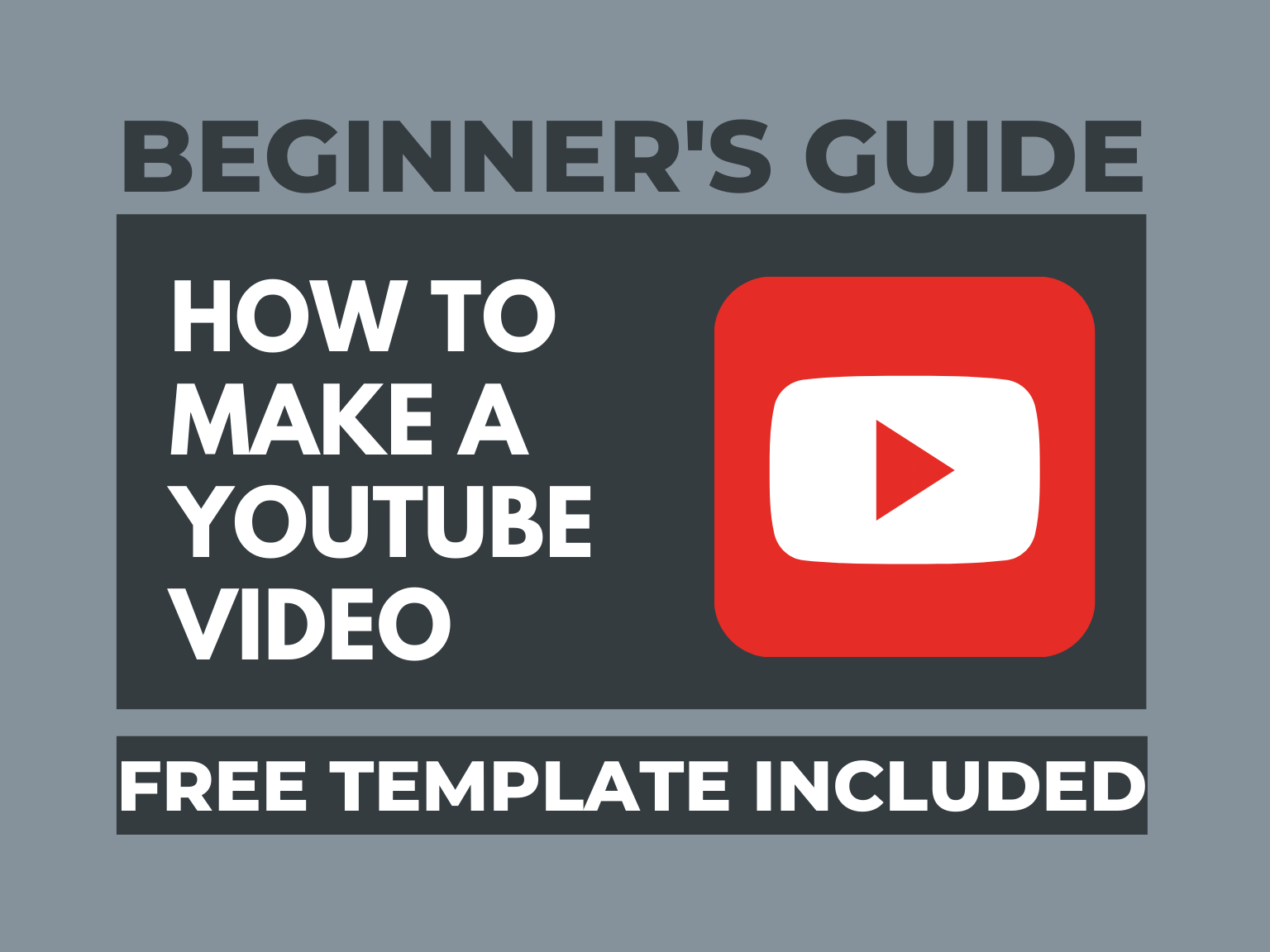
When it comes to posting video content, YouTube is the ultimate destination.
In fact, at this point, YouTube is almost synonymous with internet video.
YouTube has over 1.9 billion monthly active users and they watch a billion hours of video every day. To put that in perspective, that’s over 114,000 years of video consumed EVERY DAY.
Top YouTube content creators can make hundreds — if not thousands — of dollars a day. But ironically, being successful and making money on YouTube has little to do with making videos.
So how DO you become successful on YouTube?
Today I’m going to share with you techniques from some of the top YouTubers that show exactly what you should (and shouldn’t) do for YouTube content creation.
And, better yet, I’m going to share a FREE template to help you make YouTube videos faster!
With a few simple steps (and this awesome template), you’ll be creating content in no time!
Let’s go!
Make your own YouTube video today!
Download Camtasia and this FREE template to quickly and easily make your own YouTube videos.
Here’s everything, step-by-step, that you need to make a successful YouTube video:
Step 1. Create a YouTube video strategy
Step 2. Make sure your video is found on YouTube
Step 3. Find YouTube ideas and topics
Step 4. Understand YouTube equipment for beginners
Step 5. Learn the first YouTube video you should make
Step 6. Set up your video recording
Step 9. Upload your video on YouTube
Step 10. Optimize your video for YouTube
Step 1. Create a YouTube Video Strategy
Choose the right topic (for the right audience)
Want to know the best-kept secret about being successful on YouTube (or any other content platform)?
It has very little with you as the creator.
You can be charismatic, funny, and smart — but if you don’t provide value, your videos are useless.
It’s not about you or what you can gain. If you show up to YouTube looking to get something out of it, you probably won’t be very successful.
You need to focus on your audience. Not yourself.
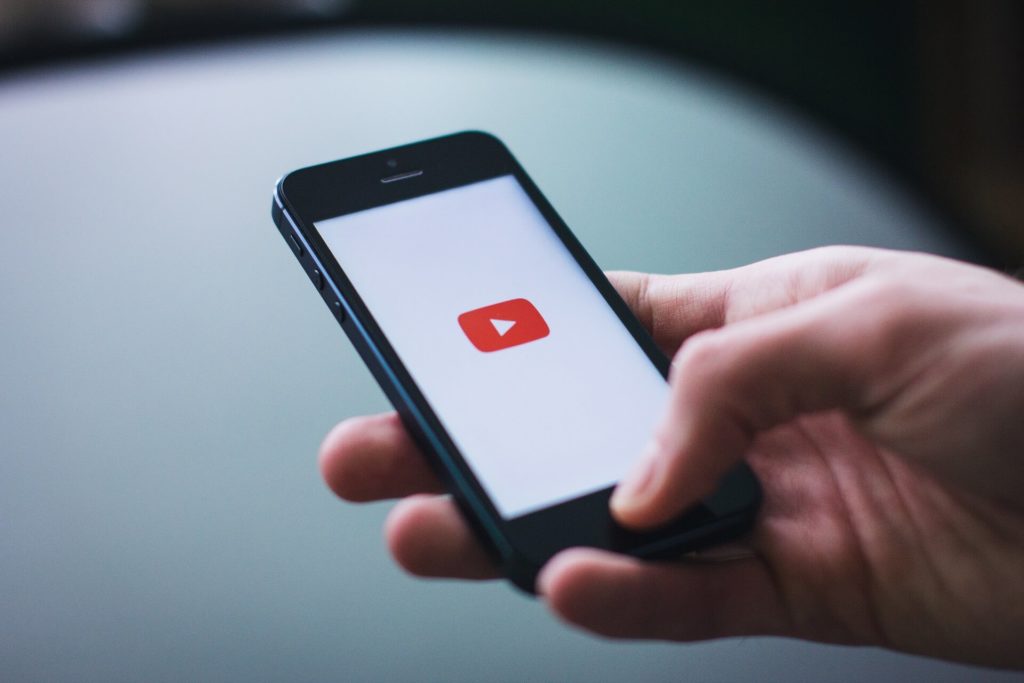
Find your perfect audience for YouTube
Before you start working on your first script or storyboard, you must answer this question:
“Who is your audience?”
Knowing your audience will guide nearly every decision you make about your video.
Knowing general information is helpful, but think about your specific audience.
- What are their problems?
- What do they need to know?
- What will they learn from your video?
- How does your video benefit them?
If you can’t answer these basic questions you need to dig deeper. The answers to these questions will guide you as you plan out and create your video.
Experts’ Take
As you start looking at what your audience wants and needs, there are some things you can do to help you narrow your focus.
Here’s advice from YouTube experts who have learned (from a lot of practice and work) what you need to define your audience.
YouTube Marketing Consultant Owen Video says, “The very first thing we do is run our clients through a questionnaire that helps them to get the biggest topics that the audience would be interested in.”
Jeremy Vest, Director of Marketing for vidIQ, suggests that listening is critical because “if you don’t listen to your audience then…you’re not going to serve them very well.” However, it’s not all about just seeking what the viewer wants.
Once you have a sense of your audience, you need to create content that matches your persona. It doesn’t matter if your video doesn’t work for other groups or other personas.
When you’re just starting out you want your audience to be as specific as possible.
Niche is good. Broad is bad.
Focus your content on helping the viewer achieve their goals. If you’re selling software, you need to make sure your video helps the viewer learn exactly what they need to be successful.
Fernando Silva, Account Executive for Wistia, emphasizes this need and suggests that we must “[get] a sense to what your audience is actually interested in and what they want to keep watching or maybe what doesn’t interest them. It … helps you make better content in the future.”
If you work hard to understand your audience but aren’t sure of what you should create for them, Tyler Lessard, Vice President of Marketing at Vidyard, stresses that you should, “focus more on the quality of the content and how you deliver it. Making sure it’s relevant to your audience, and I think that’s a simple way to start.”
Throw perfection out the window
Just start.
It’s really that simple.
I know it can be tempting to watch the big-name YouTubers and think you have to create videos just like that and engage a massive audience all at once, but all of those thoughts can be paralyzing.
“I personally believe that we’re all on the same plane, whether you’re a business or whether you’re an individual creator. Because we all start somewhere…”
Amy Landino, Co-founder of Aftermarq, and Best-Selling author of Vlog Like a Boss.
Too many people worry about getting things perfect from the beginning. We paralyze ourselves into not creating anything or releasing our content because we’re so concerned about whether we have all the right equipment, or if every part is perfect.
What should you do if you find yourself stuck on making it perfect?
Start by asking yourself a few questions:
- Will my audience not clearly understand the purpose of the video if these changes aren’t made?
- Will the video, as is, achieve your goal?
- Does the video contain something incorrect that would seriously impact the viewer?
- What is the worst that will happen if the current version is released as is?
- Can the time that could be spent continuing to edit be put to better use on another project?
Once you answer these questions, give yourself permission to move on. If you focus too much on creating the perfect video you will limit yourself in the long run.
Step 2. Make sure your video is found on YouTube
A video can’t be successful if no one sees it! You must consider Search Engine Optimization (SEO) when you start creating your video.
There is a lot to learn and figure out, but mainly you want to get your content found by the people who are searching.
Two key ways to rank your YouTube videos:
- Make content that is good for the users
- Make content that is good for search engines
At the end of the day, you want your content to be found. SEO can be a hugely complicated endeavor, but you don’t have to do everything at once. The creators we talked with made a few easy suggestions.
Andrew Kan, of TubeBuddy, recommends you make content focused on a specific topic and niches, which will help your content be more searchable. It also helps ensure that the right audience is finding your content.
“Many people spend time on broad terms that have so much competition they’re never going to show up for [in search],” he said. “If you show up on the race day, and you’re [not] a runner and you’ve practiced once, you can’t expect to win. So by practicing, by understanding that being more specific helps you be more discoverable, it helps you win.”
In addition to focusing your content on specific topics, Jeremy Vest recommends that you make sure your content is helpful and answers questions your potential audience is asking.
“Match that search intent with ‘how do I fix this blank’, and you sell that blank,” he said. “Instead of just talking about how good your widget is, be the answer to questions being asked … And being the answer to those is…one of the easiest ways for brands to start doing well in this environment and then from there beat that expectation. Provide things they’re not expecting. Have guests they wouldn’t expect to be on your program. And, give more value than they can even believe.”
To make your content helpful and findable, consider the questions being asked and where they’re being asked. Then you can create the right content and post it where it will be found.
Step 3. Find YouTube ideas and topics
Now that you know your audience, you may be wondering “What should I make a YouTube video about?” The good news is that there are tons of ways to find YouTube video ideas that your audience is searching for.
Let’s say you run a home contracting business. You decide you are going to target your channel towards current homeowners looking to spruce up their house. Your initial video topics might include things like How to Remove Popcorn Ceilings or How to Refinish Your Kitchen Cabinets.
That’s a great start, but for even more ideas than your initial list, here are some tips from Gord Isman of the best places you can use to get inspired and find highly-relevant topics for your specific audience.
1. YouTube search
YouTube search is one of the best ways to find what people are looking for. When you come up with a content idea, do a quick YouTube search and see what comes back.
Then look at the search results and decide if it’s a saturated area or there’s room to create a unique, valuable version.
You want to choose topics that you’re passionate about and that are relevant to your audience.
When you have a basic topic idea YouTube can help you narrow it down.
Search YouTube by typing some keywords into the search bar.
The auto-suggest/autocomplete feature will give you additional keywords that YouTube suggests.
Here’s an example where I typed “tutorial video” into the search bar, and a list of suggested topics appeared below.
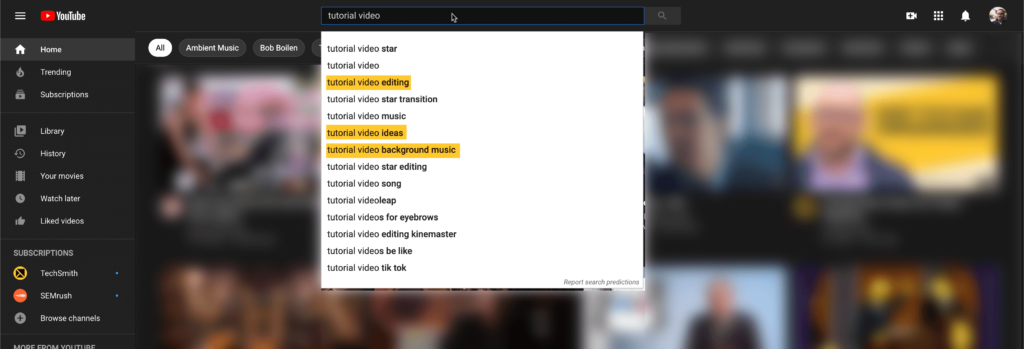
You want to take those terms and write them down. You may find after all of your research that one video can cover a lot of the same topics, or that you can create a series of videos.
For a topic focusing on “video tutorial” I would want to focus on editing, video ideas, and background music as a good starting point.
2. Comments section
The comments section of videos and articles can be a great resource for YouTube video topics.
Viewers often suggest additional topics or ask questions that suggest areas of interest for creating additional content.
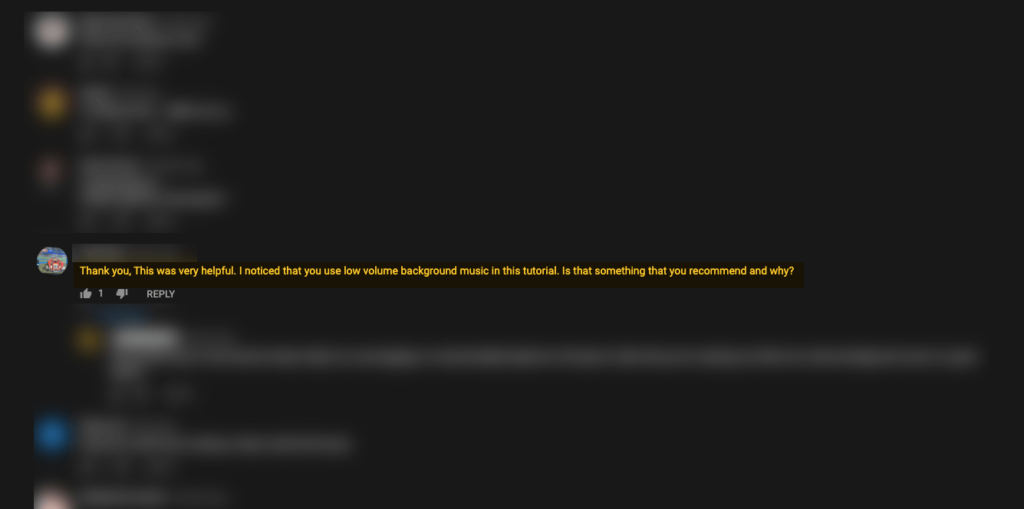
So start by looking at a competitor’s YouTube channel and start mining the comments.
3. Communities and groups
Whether it’s Twitter, a Facebook group, or a membership group, find like-minded people who will inspire you and help you out along the way.
Don’t discourage yourself by assuming you must go at it alone.
Find a group that you can bounce ideas off of and ask questions. You might even come away with some different (and better) video topics to start with.
4. Ask your audience
If you already have an audience (even a small one) it’s worth asking them what types of content they would like to see.
This is a surefire way to figure out what your audience wants to know, learn, and watch.
Step 4. Understand YouTube equipment for beginners
It can be easy to get overwhelmed and feel like you don’t have the right tools to create your video.
It’s fun to have high-end equipment and there is no question that better equipment can produce a better quality video.
Keep in mind, too, that highly specialized equipment that can be complex to run, and requires considerable time and training to master.
Especially as you’re starting out, try not to worry too much about equipment.
First, learn to get good at creating the content and worry about leveling up your gear later.
If you’re still worried about what gear you should use, Brian Fanzo, of iSocialFanz has some advice. He suggests baby steps, “…start with your phone, and then move to a web camera, then move to professional gear.”
A lot can be done with things like screen recording software, a simple video editor, or a smartphone and a little bit of creativity.
These tools can help you learn the basics of video creation, and help you to practice good techniques that will be beneficial no matter what gear you use.
“So many people focus on ‘I don’t have the right gear’ and ‘I don’t have the right camera,’ but they don’t really think about, well, what is my message? What am I trying to get across with my brand? They don’t want to just be told, buy my product. If you can make someone feel something, if you can make them relate to what you’re doing, that’s more important than any piece of gear.”
Andrew Kan, TubeBuddy
Here is some of the basic gear (outside of your phone) you may want to consider if you are going to create high-quality YouTube videos:
1. Microphone
Whether for your mobile device, input directly into your camera, or even a digital recorder, a microphone will improve the overall quality of you your video. A decent mic doesn’t have to be expensive, but it is well worth it.
2. Screen recorder and video editor
When you choose screen recording software, pick a tool with built-in recording, editing, and sharing features. It will save you time and let you do all of your work in one tool.
Recording your screen is a great way to make a YouTube video without a camera. At TechSmith, we think Camtasia is the perfect video editing software for beginners. And, it has the power and versatility to level-up with you as you gain more skills.
If you want to learn more about Camtasia and it’s simple video editing functionality, check out this quick video from Tim Schmoyer of Video Creators.
3. Lighting
If you’re recording camera video or even a webcam, video lighting will make a big difference in how you look, and the overall quality.
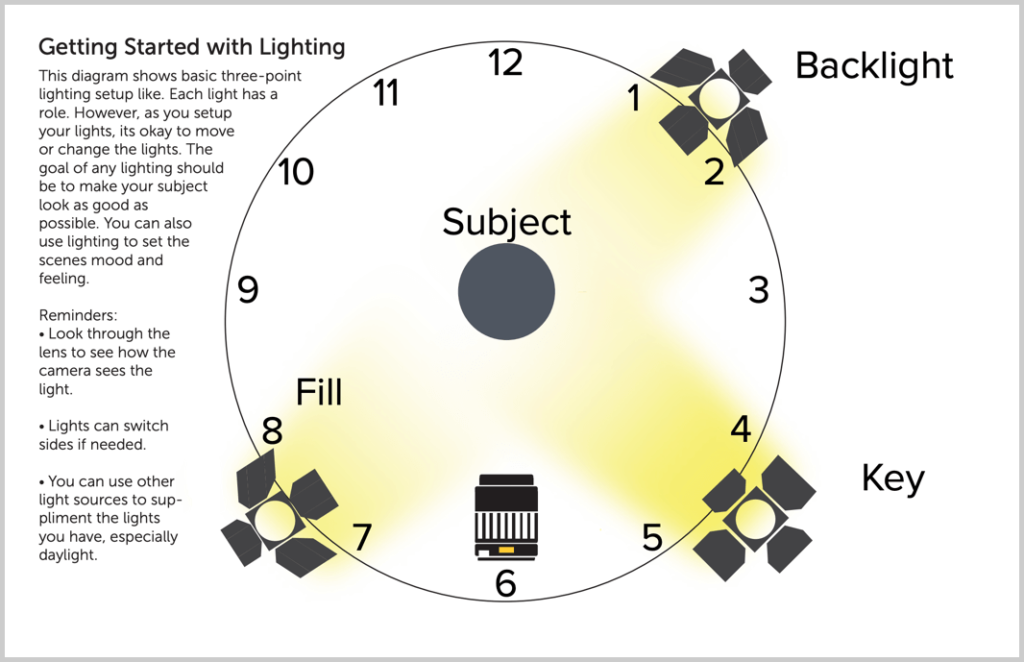
Lights will even improve the look of mobile device videos and can be a great investment. You don’t have to pay a lot of money for lights when starting. Since lighting is a mixture of science and art, a basic set will help you create a professional-looking video.
4. Camera or webcam
Cameras can be large investments, ranging from hundreds to thousands of dollars.
While DSLRs or other high-end cameras can drastically improve the look of your video, they also add a ton of settings and options that need to be managed, increasing the complexity of shooting your video.
An external webcam is a relatively inexpensive option to improve your video quality. Most built-in webcams are pretty low quality when compared to their external counterparts.
And don’t forget, you probably have a pretty nice camera in your pocket, backpack, or purse. Most of the latest smartphones can record video in full HD (1080p), and many can even do 4K.
Step 5. Learn the first YouTube video you should make
There are all kinds of videos that people create on YouTube. The best video you can start with is an instructional video.
According to a recent TechSmith study, 53% of people reported watching two or more instructional videos per week (up 152% compared to 2013).
A simple tutorial or how-to video is a great way to get your feet wet.
A tutorial video simply answers a question someone asked. It could be How to Freeze Panes in Excel or How to Change Your Oil. Either way, you’re simply sharing your expert knowledge with others.
These types of videos are all over YouTube, and with good reason.
According to a Pew research study that surveyed over 4,500 Americans in 2018, 87 percent of users said that YouTube is important for helping them figure out how to do things they haven’t done before.
That means you have a great opportunity to take create helpful and valuable instructional videos for your audience.
Do you have dog training tips to share? Gather a list of all the questions a dog owner might have and create a series of how-to videos to give them answers.
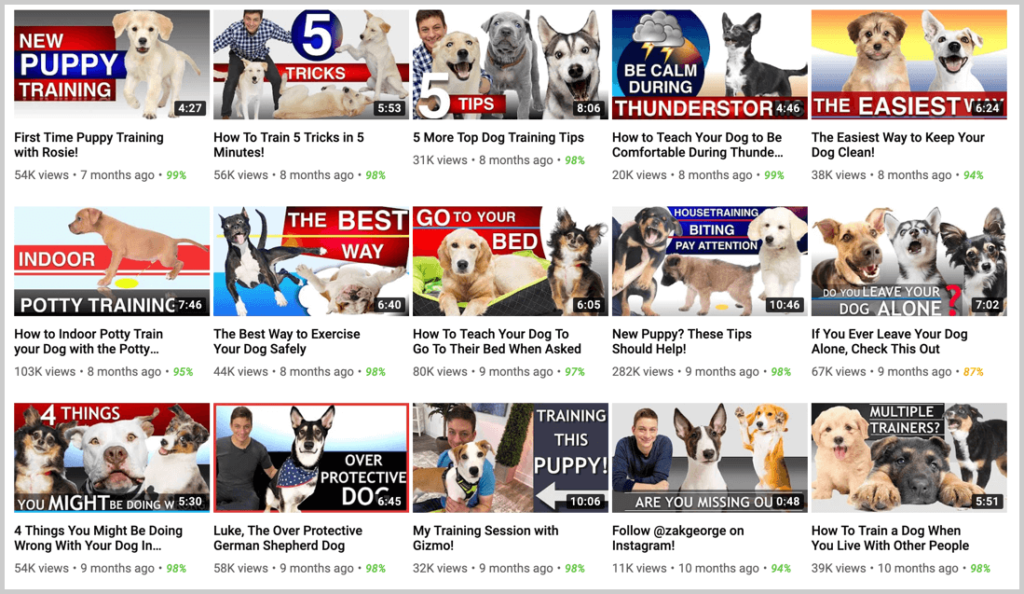
If you are an expert in Photoshop and want to help others get better, a tutorial video or training video would be a great place to start.

And if you’re a business or entrepreneur, there’s no better place to start than a product demo video or explainer video.
These videos will help your potential customers see exactly what your product or service does without having to read a ton of material.

People look for video help every day. Learning and educational content alone drives over a billion views a day on YouTube.
By the end of this guide, you’ll be able to make a high-quality YouTube video using screen recorded content, just like this one from TubeBuddy:
Step 6. Set up your video recording
Now that you know your audience, have you topics planned out, and know what video to make it’s time to get started making your video.
Write a script or outline
A script may seem pretty formal, but it’s a great tool to help you stay focused. Plan out the visuals (shots, angles, graphics, etc.) that go along with each line of dialogue.
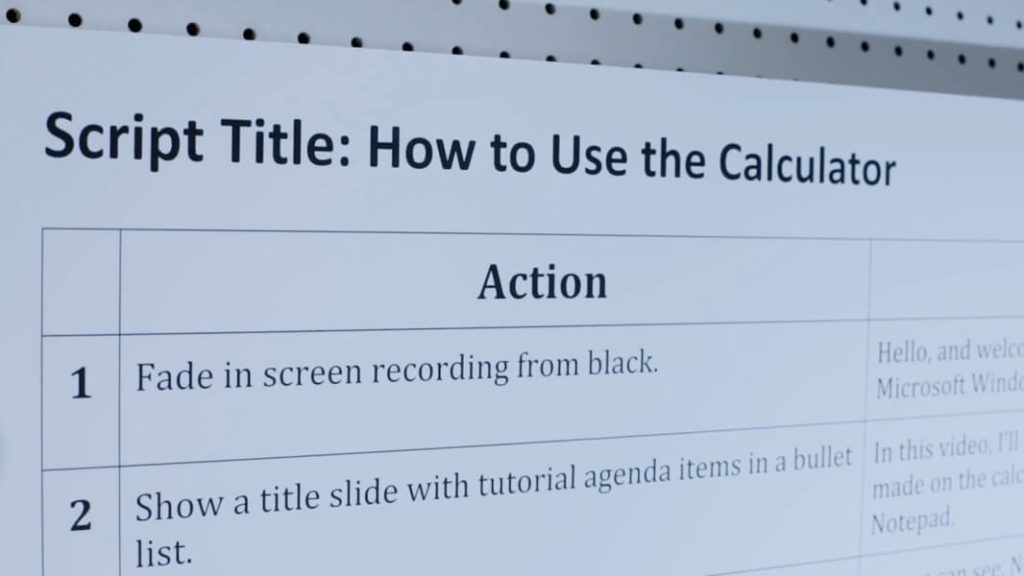
If you already have a blog post for a topic, I’d suggest you write a script based off of the original post. It doesn’t have to be elaborate.
If a script seems like overkill, a simple outline will help you talk through your points, and is better than hitting record without a plan.
Clean up your desk (and desktop)
One of the top mistakes to avoid when you record yourself is to have too much clutter, both on and off the screen.
If you’re shooting a video at your desk, business, or home you want your environment to be clean and presentable.
Next, you’ll need to adjust your camera or webcam, and video lighting (if you have them). Use an external webcam mounted behind your laptop, or—even better—turn a DSLR camera into your webcam for superior video quality.
Here’s everything you need to know about setting up your workspace for a perfect video:
Clean up your mess
If you’re getting shots of yourself, make sure anything that can be seen on screen is clean and free from clutter. A blank, single-color wall is a great background, but if you don’t have access to that, just make sure that your setting is as free from distractions as possible.
You want your viewers focused on you, not the artwork on your wall.
If your video includes a screen capture or screen recording, clutter on your computer screen is just as distracting. And there’s nothing worse than having to fumble through unnecessary apps and programs to get what you actually want to show in your video.
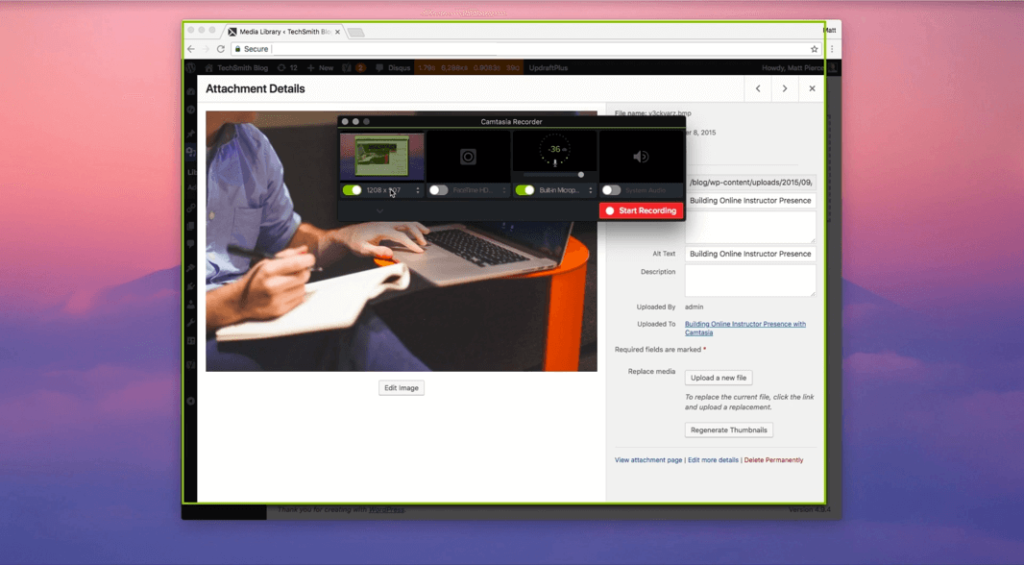
Make sure to close any unnecessary programs and windows before you record.
Avoid recording in front of windows
If you record near a window, avoid recording in front of it. Position yourself next to the window or facing the window. This way, you won’t be washed out or become a silhouette. Pro tip: this is also a great way to enhance your lighting, though be careful, as it can be hard to control the amount of light.
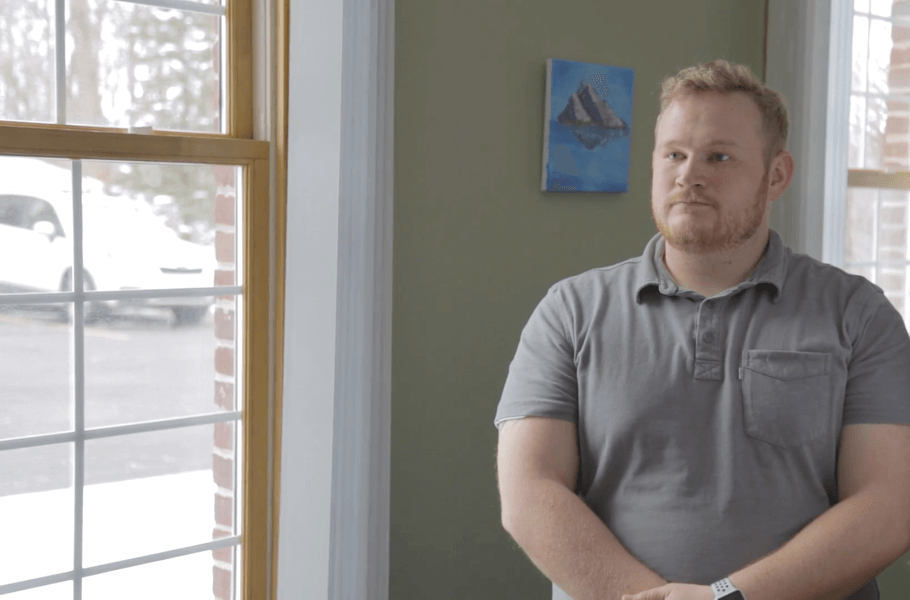
Position your camera correctly
Tilt your webcam or camera so that it’s at eye level and your viewers don’t have to look up at you. Stick to the Rule of Thirds or position yourself in the center of the frame.
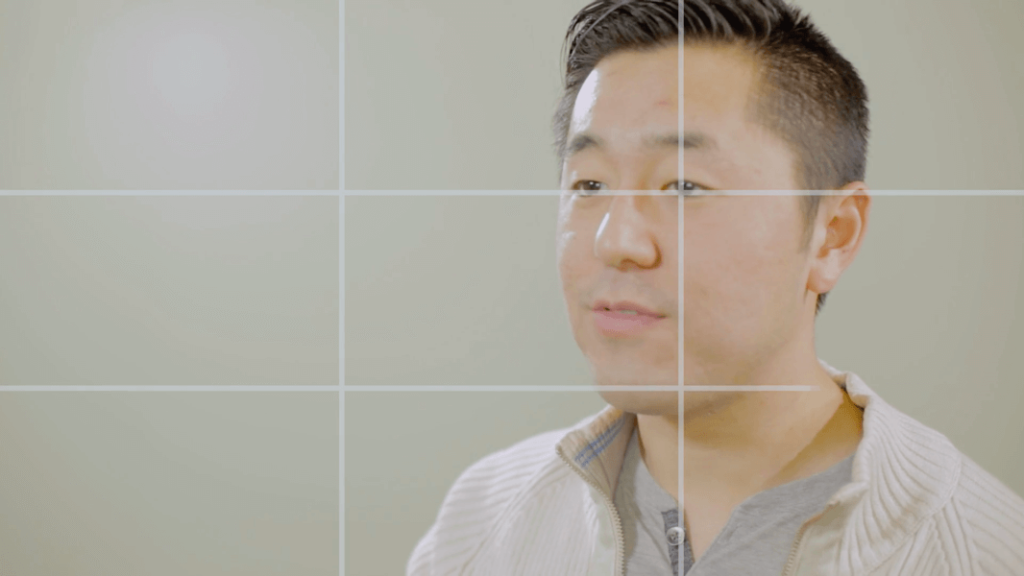
Step 7. Record your desktop
Pick your favorite screen recorder and walk through your script as you record your desktop.
Here at TechSmith, we use Camtasia for a lot of our YouTube videos.
It’s perfect for anyone who needs to make instructional videos on YouTube and we have a ton of help videos to get you started.
Your recording can be as simple or complex as you want to make it. You can record webcam to give it some personality, create an intro, add music, or simply hit record and share it out.
Make your own YouTube video today!
Download Camtasia and this FREE template to quickly and easily make your own YouTube videos.
1. Record your screen
To start a recording, click the Record button at the top of the tools panel. This opens the Camtasia recorder, which by default, is set to capture everything that happens on your screen.
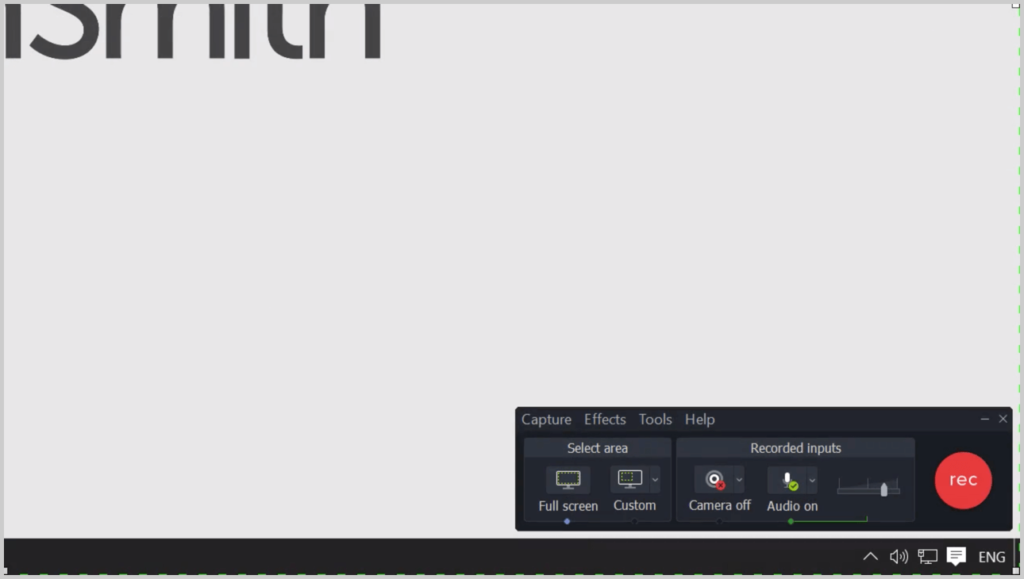
2. Customize your settings
First, you’ll want to choose to record the full screen or select a custom region to record.
Next, choose other inputs to record along with the screen. Options include webcam, microphone audio, and system audio. Select the down arrow or double arrows next to each to choose a specific microphone or webcam.
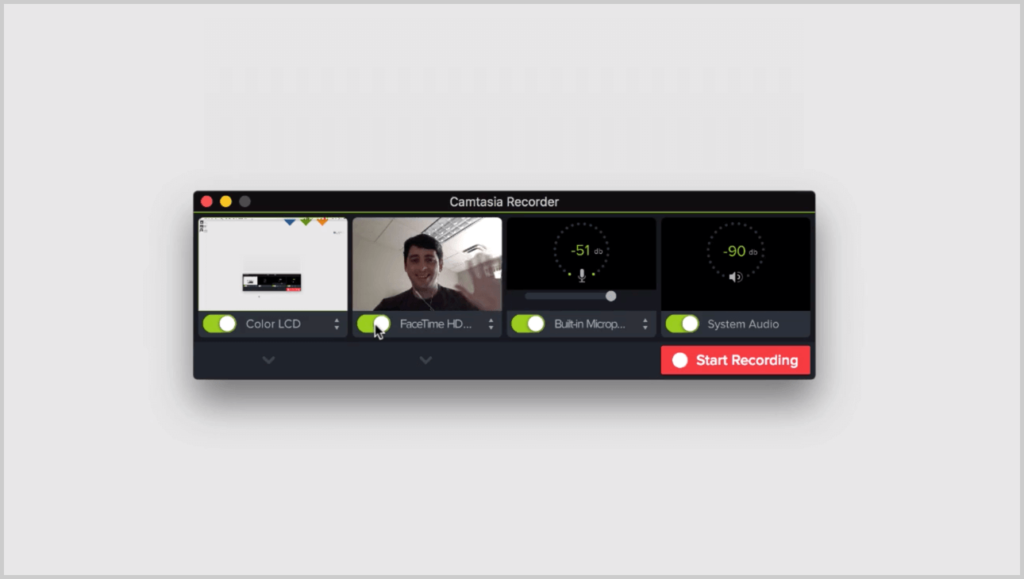
Finally, click ‘Start Recording’ to begin.
3. Finish Recording
Windows
When you’re finished recording, click the Camtasia recorder icon in the taskbar, then the stop button. If you need to re-record, choose ‘delete’ to start over.
Quick Tip: Press “F10” to stop a recording, or “F9” to pause/resume a recording.
Mac
To finish the recording, click the Camtasia icon in the Apple menu bar, then click “Stop Recording.” Or, if you need to re-record, choose “Start Over.”
Quick Tip: Press “CMD+OPTION+2” to stop a recording, or “CMD+SHIFT+2” to pause/resume a recording.
Step 8. Edit your video
Editing your video can be the most fun and most time-consuming part of the creation process. And for a beginner, it can definitely be the most overwhelming.
Here a few simple edits you can use to get started:
1. Trim mistakes
Often we record a little extra at the beginning and end of a recording. To remove the extra content, drag the end of the clip “in.” This is called trimming. If you trim too much, drag the video clip back to restore your video.
It’s good to note that any edits you make on the timeline, won’t affect your original recording in the media bin.
2. Use cuts
Drag the red or green handle on the playhead to select the area to remove, then click the cut button to remove the section. A stitched line appears, showing you where the cut was made.
If you make a selection and want to bring the playhead back together, double click the playhead.
3. Add titles, transitions, annotations, and more
Add a level of polish and professionalism to your videos with eye-catching titles, annotations, effects and more. Click and drag them from the tools panel to the timeline or canvas.
Video editing tips
There are endless resources across the web that can show you the intricate details of video editing. But there are a few video editing tips you’ll need to make a high-quality video without overcomplicating it.
Let’s go over some other common enhancements that can really make your video stand out.
Add a simple intro
A video intro leads your viewers into your content. Keep your intro simple and to the point. Viewers want to get to the meat of your content. They don’t care about anything other than what you promised to teach them.
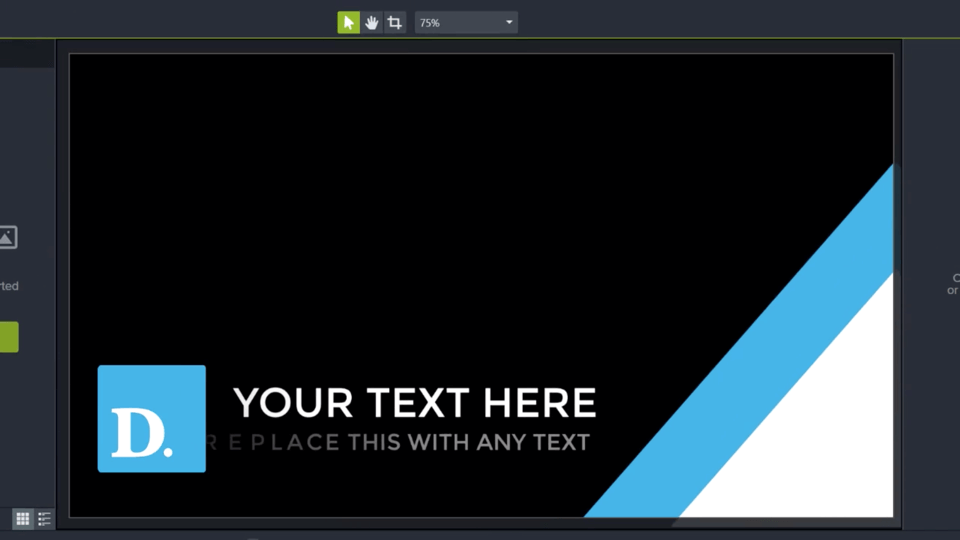
An intro can be used throughout all the videos on your YouTube channel, a playlist, or just a single video.
Create lower-thirds
A lower-third (also called a chyron) is placed on the lower third portion (usually to the right or left) of the screen and is a simple way to provide your audience with information. Usually, they display a name, place, or other useful information.
They shouldn’t cover up your visual and are meant to be complementary to your primary subject.
Add music
Finally, you’ll want to add music to your video. It will probably take you more time to choose the music you want to use than it will to actually add it to your video.
For most purposes, your best bet is to use music from a premium royalty-free music site. While the music won’t be free, it’s typically inexpensive, and you’ll have a wider range of high-quality music to choose from.
Where can you find music for videos? You can access a huge library of free and premium music tracks from TechSmith Assets.
Focus on good audio and voice over
Poor audio can sink your video.
For recording voice over, you can use Camtasia. However, for the easiest voice over experience, I highly recommend TechSmith Audiate.
Audiate transcribes your voice over as you speak. You can then edit your audio just like editing text. No more searching through the wave form to find your mistakes.
And, Audiate even lets you quickly find and delete your “ums,” “uhs,” and other mumbles and hesitations.
If you have music in your video, make sure it doesn’t overpower your with your voice over. Don’t be afraid to add those phat beats, but remember that your audience is here to learn from what you’re saying.
Pay special attention to your final edit by focusing on the sound. Close your eyes and just listen to your video. If it sounds off, you should adjust it, regardless of how amazing your footage or screen content is.
“My editing style has always been to keep our content as concise as possible. I want people to get what they need from my videos as fast as possible. And to keep our videos on brand, we always use the same font, brand colors, and tone of music – which creates consistency and familiarity.”
Sunny Lenarduzzi, Founder of YouTube for Bosses
Create a compelling outro
A YouTube outro is where you can add specific calls to action to your video. This can also be referred to as the end screen, and it is the last part of your video.
There are four different content types available for use in your end screens on YouTube, called elements. These four elements are:
- Video or playlist: This allows you to link to a different individual video or a YouTube playlist of multiple videos.
- Subscribe: This allows you to link to your own channel where a viewer can click to subscribe.
- Channel: This allows you to link to a different YouTube channel.
- Link to approved website: This allows you to link to a website outside of YouTube.
Step 9. Upload your video to YouTube
Uploading to YouTube is simple. If you use Camtasia to create your YouTube video you’ll have the option to share directly to YouTube from within the product. You’ll simply have to log into YouTube and connect your YouTube account to Camtasia.
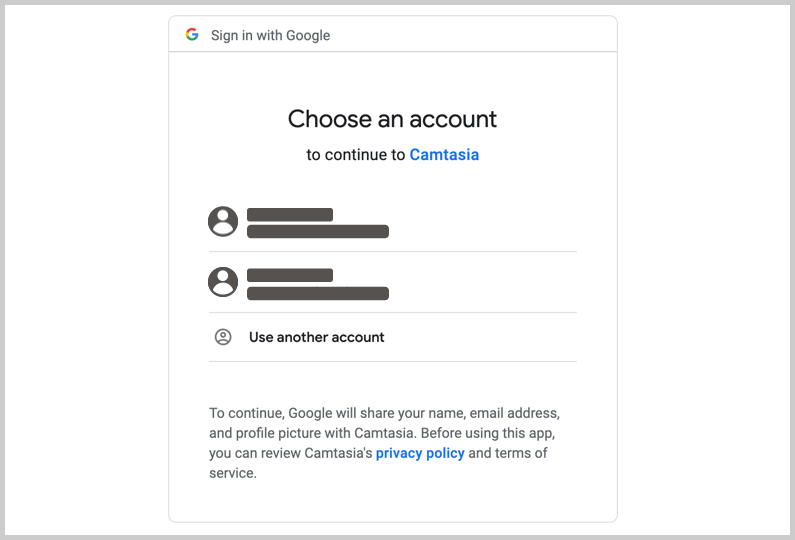
Or you can upload videos with the YouTube platform.
Step 10. Optimize your video for YouTube
As you start making your video there are few key areas you’ll want to focus in on to make sure your video performs well in YouTube. By being strategic while you make your video you’ll give yourself a better shot at ranking on YouTube.
Video Production Optimization
Target keywords that list videos on Google
Have you noticed more videos popping up in your search results?
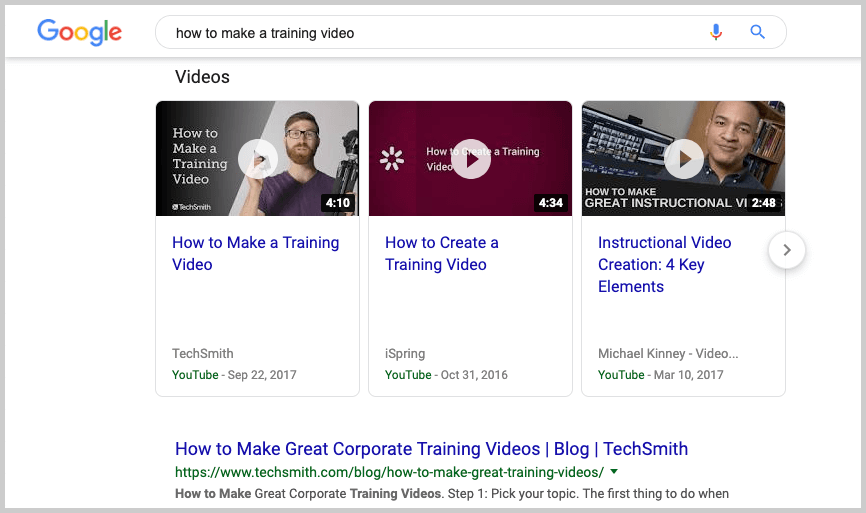
Google processes 3.5 billion searches per day, and many how-to based searches now include YouTube videos directly in the Google search engine result.
These online videos show up for all sorts of searches. Simply type in “how to fix my fridge” or “how to change spark plugs” and Google will give you the top YouTube videos based on your search.
Make longer videos
Longer videos generally rank higher than shorter ones.
Backlinko analyzed 1.3 Million YouTube Videos and found that the average length of a video on the first page of YouTube is 14 minutes, 50 seconds.
YouTube will push longer videos higher in search results.
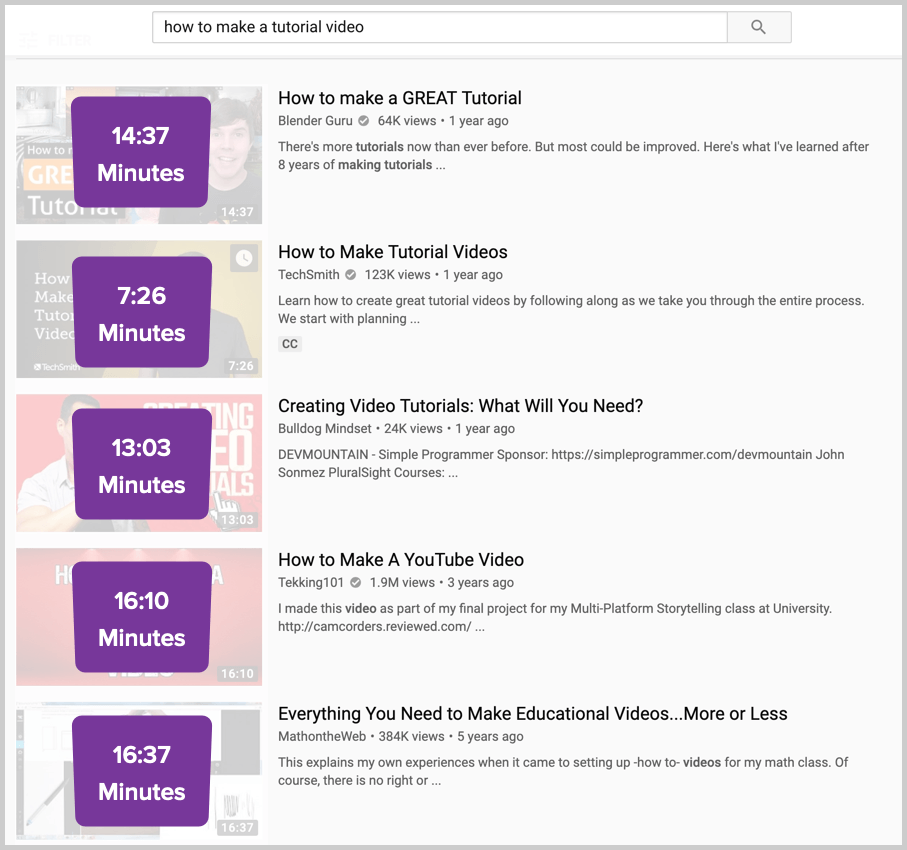
This has to do with two key ranking factors: Total Watch Time and Total Session Time.
Essentially YouTube will push videos higher in the ranking if they provide value and keep people on the site as long as possible.
So as you plan your videos, think about how you can expand them. And rather than just adding filler content, think about how you can dive deeper into your topic to create an even more useful video.
Make sure your keyword is spoken in your video
YouTube transcribes your content, so try and say your main keyword 1-2 times in the script.
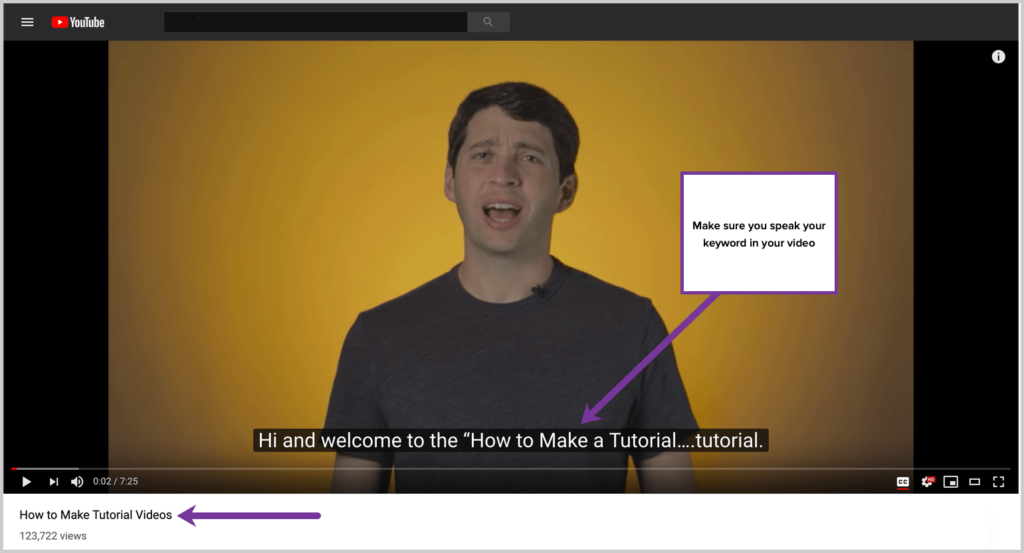
Make a unique introduction
Retention is everything on YouTube. Incentivize users to watch as long as possible in your first 10 seconds. Tease out what you’re going to talk about and give them a reason to stay and watch your video.
Tell users to…
Comment, like, subscribe, and visit your site at the end of the video. If you don’t tell them to do it, they probably never will. And if you are creating supportive, helpful content they will be more likely to interact with your YouTube channel.
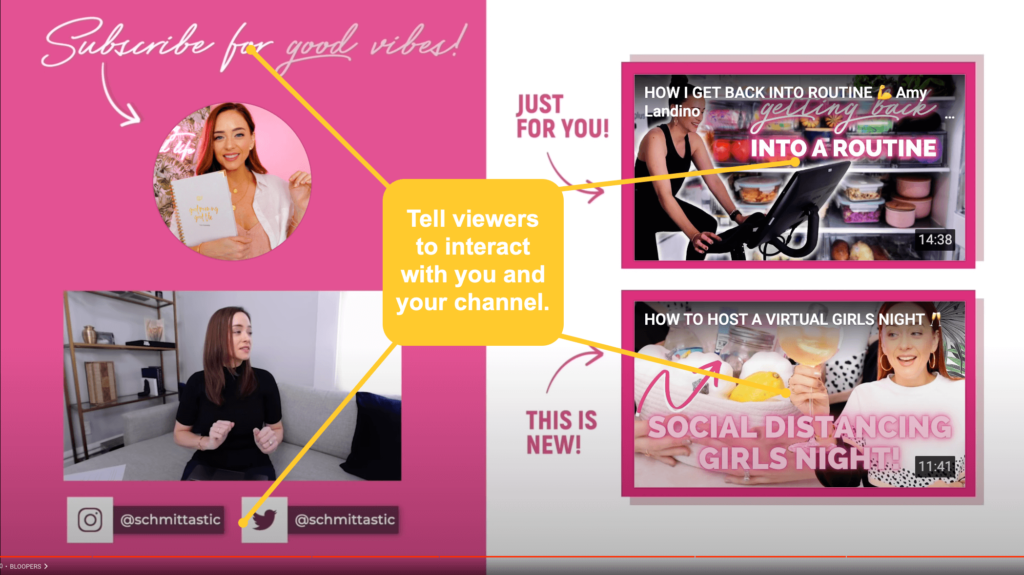
YouTube Ranking Optimization
Now that you’ve created an optimized video, it’s time to optimize within the YouTube platform. You don’t want to overcomplicate this. It isn’t about stuffing keywords into places and trying to trick YouTube into ranking your video.
You want to be strategic in what you do, and above all else, provide value to your audience.
Title, description, and thumbnail
Get the keyword in the title and description, preferably at the front, but don’t forget to make it compelling and click-worthy. It’s less about trying to stuff keywords in and more about letting viewers know that your video will help solve what they are looking for.
Pro tip: Be honest in your title and description. People stop watching videos that don’t deliver on their promises.
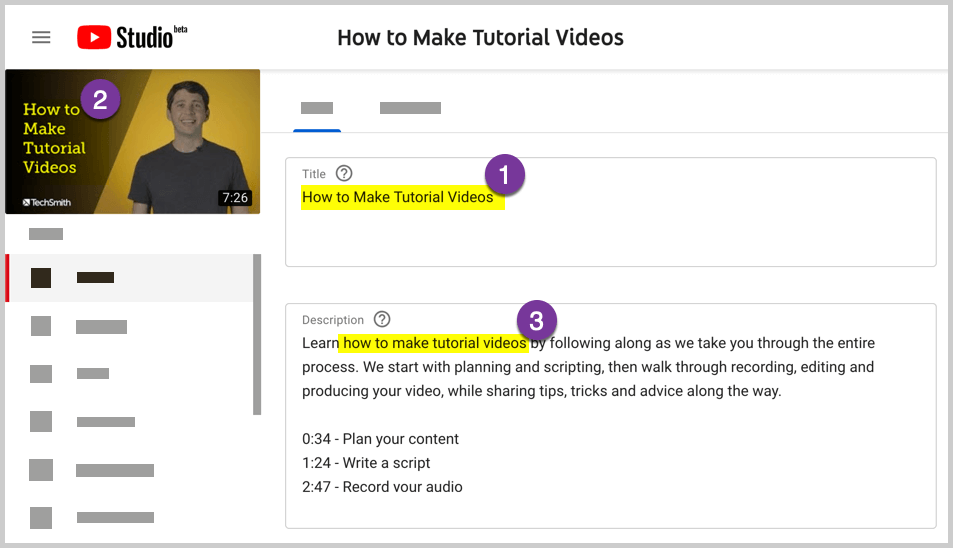
According to YouTube, 90% of the best-performing videos on YouTube use a custom thumbnail. Try to make your YouTube thumbnail interesting and different than everything else in the search results.
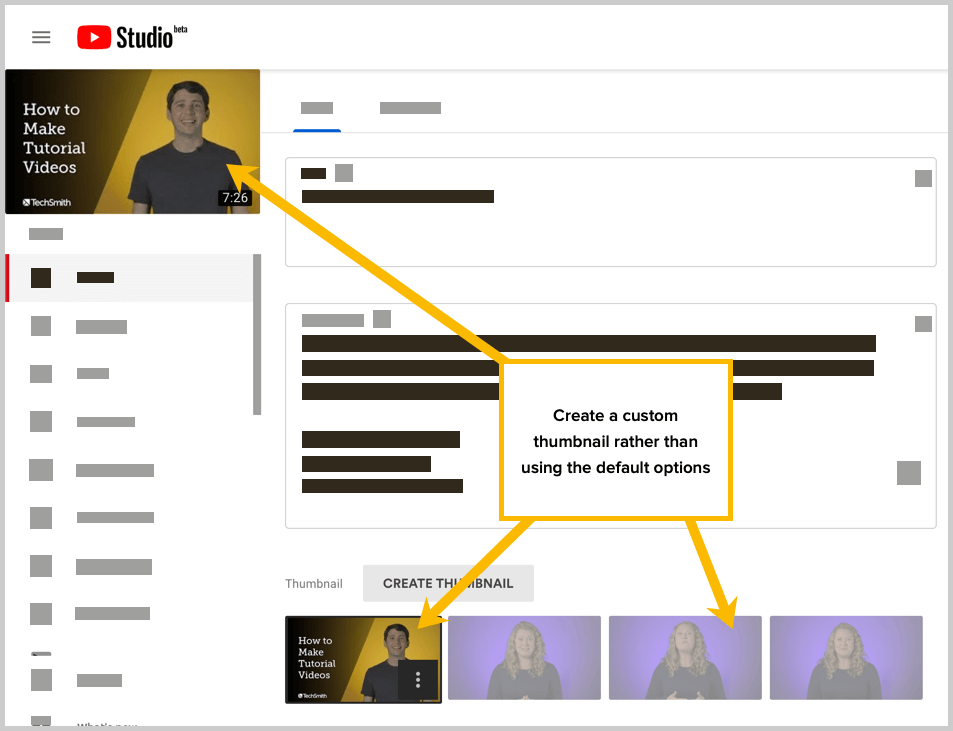
Make your video worthy of a click.
Leverage your current audience to build video velocity
The first 48 hours your video goes live are critical. This is where leveraging your current audience plays a big part.
You can create a stronger buzz and your views begin to climb through your existing base. Owen Video likes to create video velocity by acquiring views before a video is public and rewarding his followers with exclusive content.
As a result, YouTube sees the video as more valuable and it becomes more likely to appear high in the search results.
Here is one of Owen Video’s most successful strategies for YouTube video promotion. Mirroring his strategy with your own videos will help you improve their performance early on:
Owen Video’s video promotion strategy example:
- The first day he publishes a video, he leaves it unlisted (the video can’t be searched or found by the public without a link).
- The link to the unlisted video is distributed on social media channels.
- The link to the unlisted video is emailed to applicable mailing lists.
- The audience gets early access to a new piece of content and feels rewarded for maintaining a relationship with Owen Video.
- Then he makes the video public. When the video goes live, there are already views which help build traction for the video.
This is video velocity, and essentially, you’re getting a head start on YouTube.
“So what happens is, you create velocity with your video…people are watching it before it’s even public, yet. Having that distribution, or pre-promotion plan is going to set [you] apart from your competitors who are just figuring this stuff out.” – Owen Video
What’s next?
We’ve covered a lot in this guide. And whether you’re just getting started, or you’re a video veteran, you’ve learned some of the key tools and strategies to create successful YouTube videos.
Make your own YouTube video today!
Download Camtasia and this FREE template to quickly and easily make your own YouTube videos.
Camtasia is built for anyone who needs to make any kind of instructional video. We offer a ton of helpful tutorials to get you started. And, for the record, we make 100% of our tutorials and other screencasts using Camtasia.
Frequently asked questions
To make your first YouTube video, start by getting a simple video editor like Camtasia and just try making a few videos on topics you’re an expert on.
If you know a lot about a particular product or service, try putting together a quick tutorial. There is no shortage of people searching for help across YouTube, and you could be their answer.
There are tons of ways to find YouTube video ideas that your audience is searching for. Three of my favorites are YouTube searches, comments sections, and communities.
There are all kinds of videos that people create on YouTube.
Over half of the most common types of videos that marketers are investing in are a type of instructional video. That gives you a lot of good videos to start with.
YouTubers use all sorts of different programs to edit their videos, but at TechSmith, we think Camtasia is the perfect video editing software for beginners.
If you want to learn more about Camtasia and it’s simple video editing functionality, check out this quick video from Tim Schmoyer of Video Creators
Recording your screen is a great way to make a YouTube video without a camera.
When you choose screen recording software, pick a tool with built-in recording, editing, and sharing features. It will save you time and let you do all of your work in one tool.
It can be easy to get overwhelmed and feel like you don’t have the right tools to create your video. Start with your phone or screen recorder and a simple video editor. Then move to professional gear.
Editor’s Note: This post was originally published in May 2019 and has been updated for accuracy and comprehensiveness.




